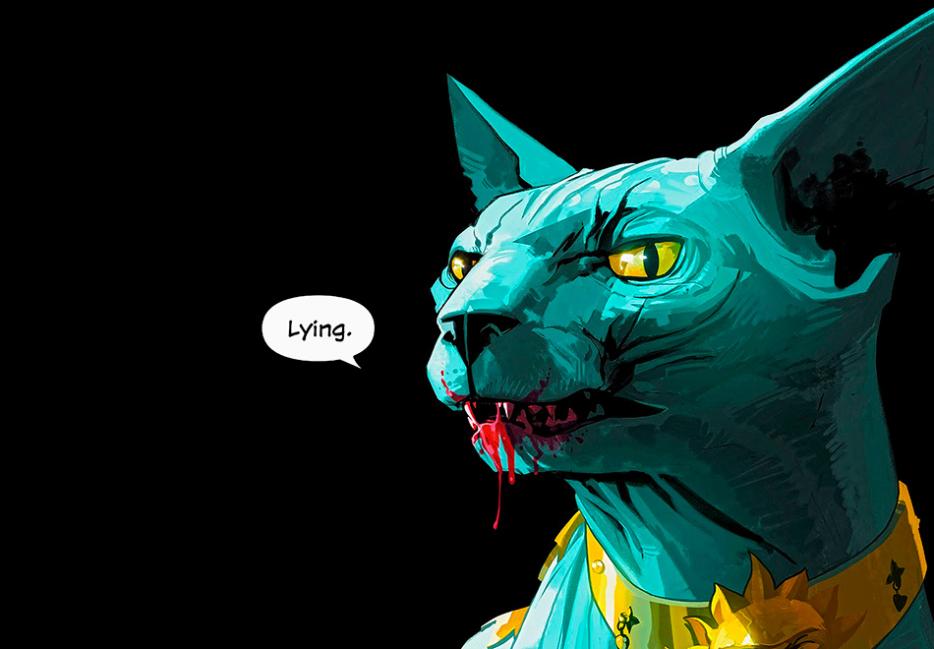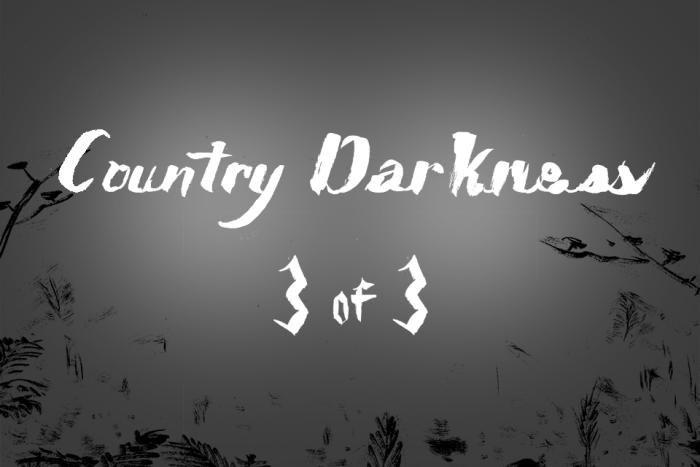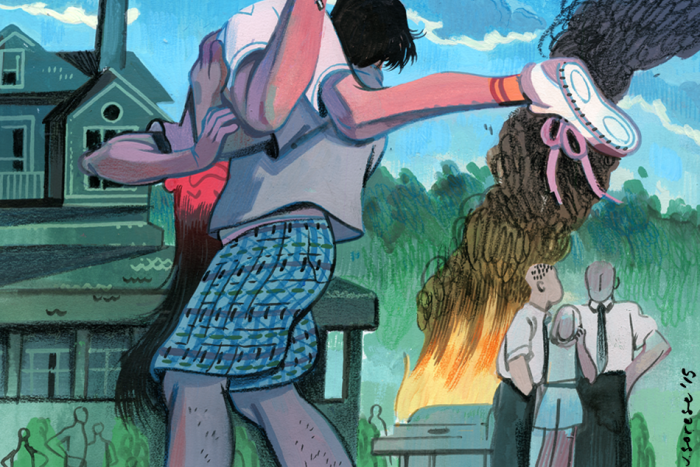Science fiction and fantasy dwell in close proximity, but rarely cross-pollinate. Many a bookstore shelves the two together, and the nominees for annual awards given to genre works, such as the Nebula, often include novels and stories that fall into either category. Both require suspension of disbelief, albeit in different ways. A science fiction reader who can embrace a futuristic narrative involving artificial intelligences or evolved dolphins may balk at a story about intrigue surrounding magicians or goblins. Conversely, a reader dedicated to novels steeped in elven lore and epic battles with dragons could draw the line when it comes to time machines, Dyson spheres, or faster-than-light travel. All of this, admittedly, veers dangerously close the irate commentary of Martin Starr’s Party Down character Roman DeBeers that no one really understands his love for hard science fiction:
Nonetheless, it’s a curious thing: these are two genres that have very little in common, yet are frequently, almost inevitably lumped together. Although legendary science fiction writer Arthur C. Clarke once memorably declared that “[a]ny sufficiently advanced technology is indistinguishable from magic,” you aren’t likely to find a novel featuring a rogue warlock on a generation ship, or an android conscripted to do battle with an army of orcs.11The psychic powers used by the rival groups of immortals in David Mitchell’s The Bone Clocks and Slade House might fall into this category, however.
In some ways, that’s a shame—smashing together two seemingly disparate styles can make a mess, to be sure, but it can also produce some memorable storytelling. In an essay on Julian May’s Saga of the Pliocene Exile novels, in which time-traveling humans encounter aliens that resemble dwarves and elves on a prehistoric Earth, Alexander Chee made the case for the appeal of converging genres:
This was the most confident reinvention of the known world and its cultures I’d encountered in years, an alternate history/science-fiction masterpiece with a fantasy novel coating, stocked somehow with everything, ever: magic, spaceships, alien colonies, elves, dwarves, knights, time travel, psychic powers, castles—and love in headdresses, to boot.
Thankfully, these sorts of hybrids have become less rare in recent years: a number of notable narratives have arisen drawing substantial power from the contrast between the ground rules and genre expectations they establish. And if one moves outside of the realm of prose, there are even more examples to be had: Brian K. Vaughan and Fiona Staples’s acclaimed comic Saga, for instance, is a story set across numerous planets and galaxies, with a war between a technologically advanced society and one of magic users at its center. One of its supporting characters is a sentient robot; another is a ghost. Simon Spurrier and Jeff Stokely’s The Spire also brings together elements of the science fictional and the fantastic. When I interviewed Spurrier about it last year, I asked him about the setting. His response was telling: “I’ve always wanted to create a fantastical world which feels functional, because I’m weary of genre stories that are contrived purely to enable the story taking place inside them.”
Charlie Jane Anders’s new novel All the Birds in the Sky consciously has a foot in either camp. It follows Patricia and Laurence—each of whom, it is quickly established, from childhood on, is talented in a particular way: Patricia with magic, Laurence with science. Innocuous as this first seems, it’s a harbinger of ominous things to come: one character sees a vision of “a war between magic and science that would leave the world in ashes.” Anders’s novel is set in the near future, one in which nightmarish weather has become more frequent, and the continued existence of humanity seems at risk. It’s something both of the novel’s protagonists must grapple with, even as the societies of technologists and magicians with which they are aligned prepare their own contingency plans to save humanity.
For Anders, the relationship between the two narratives was vital. “As long as neither of the two starts to take up more importance than the other, then the balance of the novel is maintained,” she told me. “But the tricky part, for me, was letting go of the idea that everything had to be exactly paralleled, and mirrored, between Patricia the witch and Laurence the mad scientist.” In the end, she eschewed direct parallels for an approach she described as “massively different but equal in weight.”
A sequence halfway through the book, in which Patricia helps to recover a colleague of Laurence’s who has ended up in another dimension, serves as a showcase for the underlying methodology of Anders’s novel. For all that the two seem on different sides of a significant divide, their approaches each have serious rules underpinning them. When it comes to magic, Anders introduces a particularly novel riff on the idea of a secret school for magicians, a concept both J.K. Rowling and Lev Grossman have used memorably in recent years. It’s the corollary of Clarke’s comment about advanced technology: magic, in certain forms, begins to resemble technology—albeit a highly theoretical version of it.
“I think people who came of age reading about Doctor Strange teaming up with the Hulk and the Silver Surfer have zero problem with the idea of fantasy and science fiction co-existing."
Alternately, it’s reminiscent of a line of dialogue from Warren Ellis and John Cassaday’s comic book Planetary, in which one character calls magic “the cheat codes for the world.” It’s a workaround, to be sure—but there’s still something below it. For Anders’s part, keeping some separation was important. “I sort of agree with NK Jemisin that too many codified rules can make magic begin to look too much like technology,” she said. “Magic should be mysterious, at least a little bit. That said, I think there need to be limitations on magic, and it has to feel both real and grounded.”
Underlying rules or limitations can also make for strange and distinctive settings that straddle the science fictional and the fantastic. Kai Ashante Wilson’s The Sorcerer of the Wildeeps seems, at first, to be set in a fantasy world—there’s a monster of which its central characters are wary and from which they must be on guard. In her review of the novel for io9, Anders pointed out that, among its strengths, it’s “about the kind of fighters that most fantasy epics rarely dwell on—the mercs in the gutter, who are just fighting for gold and dying in often completely pointless fashions.” But it’s also possible to read Wilson’s book as set in a science fictional world that’s forgotten its history. Demane, the book’s protagonist, is prone to digressions on topics about which he is much more knowledgeable than most of his compatriots:
“The gods could only carry away Homo celestialis with them, you see, because the angels had already learned to make their bodies light. But most sapiens–even those of us with fully expressed theogenetica–haven’t yet attained the psionic phylogeny necessary to sublimnefy the organism.”
“No doubt.” Cumalo nodded mellowly. “No doubt. I had always maybe thought it was something like that.”
In the end, the bizarre technology and genetic legacies of their ancestors become the stuff of drama, and Demane’s knowledge of and intimate connections to it spark seismic changes in his own place in the world and how he interacts with his onetime comrades. There’s a similar sense of looming histories in Nicole Kornher-Stace’s Archivist Wasp, in which the titular Wasp, a young woman in the distant future, hunts ghosts on behalf of her community. In an interview with SF Signal, Kornher-Stace described the setting as “a Golden Bough-esque society that’s so far post-apocalyptic that it’s reverted to pre-industrial.” So: the stuff of science fiction, but with ghosts. Ghosts, however, that take a physical form, and which seem to be as tangible as any other being in Wasp’s world. It makes for a memorably surreal reading experience: the gritty thrill of a post-apocalyptic narrative set in a mysterious society blended with the mysteries of the paranormal. Some of the strengths here come from the narrative’s fundamental weirdness: at no point does the author draw back the curtain and explain the ghosts’ existence. They’re not pools of psychic energy or something else pseudo-scientific: they’re ghosts, subject to their own natural laws. It’s one part China Miéville, one part Wings of Desire.
Jo Walton’s The Just City, the first book of a trilogy, gloriously brings together elements from across genres. It’s a novel about time travelers creating a utopia—except the time travel is caused by the Greek pantheon of gods, looking to establish a city along the lines of Plato’s Republic. It’s an odd blend of philosophy—both in terms of the novel’s mechanics and because many of the novel’s characters wind up discussing said philosophy—and intrigue. But there’s also a decidedly science fictional element, given that the community is bolstered by the addition of several robots from the near future, some of whom begin to develop intelligence. It’s a classically science fictional subplot—at what point is a machine considered sentient?—wrapped in a larger narrative that is anything but.
The elements that make up Walton’s novel can, at times, feel discordant. Admittedly, though, that’s part of the point of these sorts of exercises: in Anders’s novel, magic has as many underlying rules as science, even if Patricia doesn’t always divulge what they are. For Kornher-Stace and Wilson, the ways in which science fiction and the supernatural come together are baked into the settings: there are rules, and while the characters may not be aware of all of them, the authors certainly are, different as they may be from story to story. Walton’s cast of characters includes omnipotent beings; Anders’s novel represents a way to find the symmetry between the two approaches; Wilson’s and Kornher-Stace’s are focused on finding the mysteries wrapped in both. Walton’s approach seems to be more about mashing up elements that, theoretically, have no narrative business being together—even within the already-volatile world of science fantasy—and finding ways to turn them into the stuff of compelling drama. Though it’s also interesting to note that the novel’s sequel, The Philosopher Kings, is itself a stylistic departure, focusing more on alterations to the ancient timeframe, including the introduction of a kind of skewed Christianity. The third book in the trilogy, the forthcomingNecessity, seems to be as different from its predecessor as The Philosopher Kings was from The Just City.
In Anders’s All the Birds in the Sky, magic is explained to scientists using terminology borrowed from Doctor Who (“I reversed the polarity of the neutron flow”).It’s a knowing nod to a series that uses a science fictional toolbox to explain the occasional appearance of the seemingly supernatural. “Doctor Who is pretty resolutely science fiction, and at least in theory any magic that appears will turn out to have a scientific explanation,” Anders told me. “But just like Star Trek, Star Wars and some other big media science fiction franchises, Doctor Who is more than willing to go in some pretty fanciful directions.” That, too, might help explain readers maintaining the ability to juggle both concepts in their heads over the course of the same narratives.
Another contributing factor to the contemporary converging of science fiction and fantasy narratives might wear capes and tights. “I think people who came of age reading about Doctor Strange teaming up with the Hulk and the Silver Surfer have zero problem with the idea of fantasy and science fiction co-existing,” Anders said. The same is true outside of the superheroic realm: Alan Moore and Kevin O’Neill’s The League of Extraordinary Gentlemen brings together pieces of both, and the cast of Eric Powell’s ecstatically pulpy The Goon includes mad scientists, zombies, and werewolves.
Anders also noted that readers these days are more aware of the tropes of certain genres. “A ton of people are accustomed to a wide range of things that happen in genre storytelling, and everything feels that much more familiar, thanks to the Internet,” she said. “That means you can play around with those expectations more—or you can throw them out entirely, and try to find the story that makes the most sense with your weird, unmanageable characters.” Anders’s observation suggests that the meeting of science fiction and fantasy is only just getting started. Given that the two genres already contain an array of possibilities uninhibited by the laws of our own world, the potential narratives that can arise from this are, quite literally, limitless. It may not be fiction that hews to rigid and elaborate genre definition, but then again, the best fiction rarely does.






